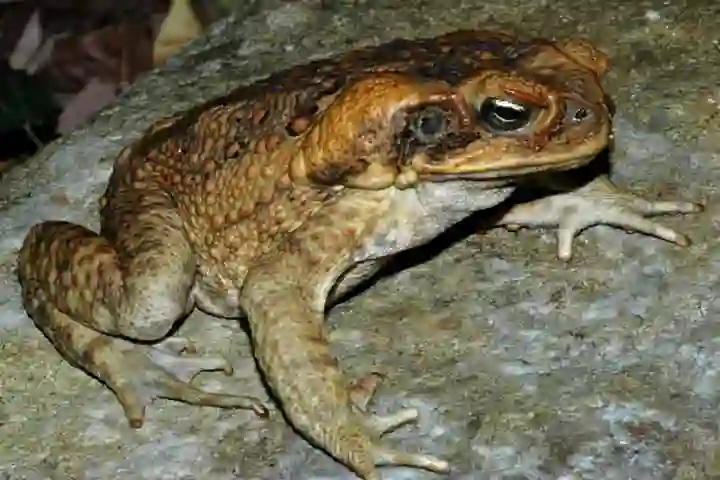Nature’s ways of controlling population of a species are indeed amazing and a proof of this can be found in a recent study conducted on cane toads (Bufo marinus).
The sugarcane farmers in Australia decided to use cane toads in 1935 with the aim of getting rid of pests that created problems for them in their fields. Later, they found that the pest controller had turned into a pest itself. The reason being this warty amphibian whose physical characteristics included a highly poisonous skin of olive-brown hue and thick ridges over its eyes, ate everything which fitted in its mouth, from rodents to birds.
Once established in the nation, the toads found it had no natural predators to fear or deal with. This triggered a massive increase in its population with the prying creature expanding across swathes of land in Northern and Eastern Australia. As per Max Kozlov of the Nature, their population reached more than 200 million in the country, according to an article in smithsonianmag.com.
With no enemies to fear triggering a huge population jump, nature took its course and cane toad tadpoles started eating their peers, reported John Timmer of Ars Technica. The cannibalistic tendency came into being as a form of evolutionary response to the fact that the toads did not have to compete with any other species in the environment for the resources, except their own.
However, again, nature stepped in. Now researchers at the University of Sydney discovered that with tadpoles becoming food for their own kind, they started evolving methods to avoid becoming a meal. This included hastening the process of developing thereby reducing the time they would be vulnerable to predation by other hungry tadpoles, reported Live Science’s Laura Geggle.
Details of this study was published this week in the journal Proceedings of the National Academy of Sciences, which is peer-reviewed.
Earlier during close observation of toad tadpoles in the species' original native habitat in South America, it was found that they ate their peers. In the present case, a vital difference was deduced in the behaviour of the native species and invasive ones in Australia. To study and confirm these differences, the research team got toads from South America and Australia and raised them.
Also read: Female octopuses repel amorous males by flinging debris and shells!
Once they started breeding, the researchers introduced a single large tadpole in a group consisting of 10 tiny hatchlings just out of their eggs.
Researchers found that the chances of Australian tadpoles likely to eat hatchlings were 2.6 times more than that of South American tadpoles according to a report in Nature. Interestingly, however, once the hatchlings became too big to be cannibalized, the older tadpoles left them alone. Likewise, it was discovered that tadpoles who were older did not seem to have an appetite for other tadpoles of their size and age.
Another crucial observation was that while South American toads spent five days at the hatchling stage, their Australian counterparts spent, in this stage, three days only. This suggested that latter toads because of the pressure of being cannibalised cut short their time to develop by half.
Study author and herpetologist from University of Sydney, Jayna Devore discussing this point with Live Science, observed: "We found that cane toad clutches from Australia developed more quickly; they reached the invulnerable tadpole stage in about four days, whereas native range clutches took about five days.”
Also read: Study of rhinoceros genetics will help boost their dwindling population
This research will pave way for a better comprehension of how competition amongst a species triggers an evolutionary arms race and accelerates rapid evolution.
Summing up this study, Devore remarked: "The good news is that cannibalism can control population growth. So, although cane toads are unlikely to drive themselves extinct, these cannibalistic behaviours may help to regulate their abundance post-invasion."




















